Yesterday we showed you a few of our native plants that are starting to set seed, plants that we hope will continue to grow and fill in over the years. Unfortunately, we also have a number of uninvited guests that like to call Curbstone Valley home. I’m not talking about the occasional errant dandelion or tufts of clover in a lawn. Our undesirables are rather more thuggish, and prolific. They didn’t just drop by unannounced, they downright moved in, commandeered the remote control, wiped out the contents of the refrigerator, and changed the locks!
The most challenging invaders to identify here are the grasses. Most of them were simply green and blade-like in spring, but they’re now starting to reveal their unique awns and seeds that will help us to determine whether or not they should stay.
Briza maxima (Big Quaking Grass) Cal-IPC statewide impact: Limited
Briza minor Cal-IPC statewide impact: Not Determined
Bromus tectorum (Downy brome) Cal-IPC statewide impact: High
Cynosurus echinatus (Dogtail Grass) Cal-IPC statewide impact: Moderate
Geranium robertanium (Robert’s Geranium) Cal-IPC statewide impact: Not Determined
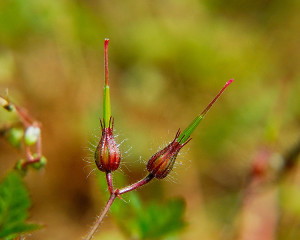
Just one of a number of non-native geranium species here, Geranium robertanium is particularly prolific in areas with partial shade
Hordeum murinum (Foxtail Barley) Cal-IPC statewide impact: Moderate
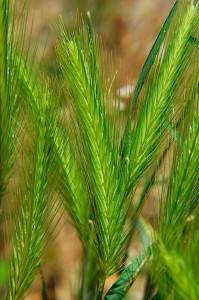
Pet owners beware, the awns of Hordeum murinum, and related species, can cause significant harm to pets
Take note, this particular plant is potentially dangerous to pets. The awns can lodge in the skin, oral, ocular, nasal or auricular cavities, and can result in severe infections, and occasionally death.
Myosotis latifolia (Forget-me-not) Cal-IPC statewide impact: Limited

Many love forget-me-nots, Myosotis latifolia, but near creeks and waterways this species can become particularly problematic
Papaver somniferum (Opium Poppy) Cal-IPC statewide impact: Not Determined
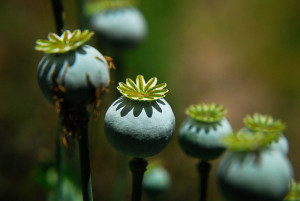
An escaped cultivar, Papaver somniferum is becoming naturalized in some counties in California. This plant was a volunteer presumably brought from a neighboring property by birds.
Polypogon monspeliensis (Rabbit’s foot grass) Cal-IPC statewide impact: Limited
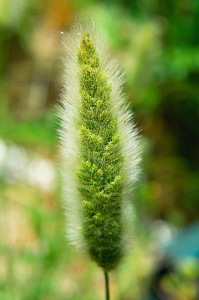
The seed heads of Polypogon monspeliensis are quite attractive, and on average are at least the size of my thumb!
Torilis arvensis (Hedge Parsley) Cal-IPC Statewide impact: Moderate
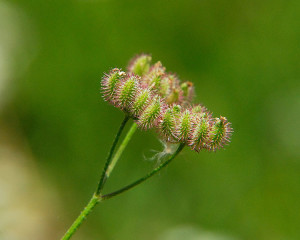
Appearing innocent in bloom, Torilis arvensis becomes bothersome in early summer, forming thousands of tiny sticky burrs that stick to almost...EVERYTHING!
This particular intruder is highly invasive in laundry. Clothes that have never been worn outside, if washed with clothes worn in the garden, emerge from the laundry covered in spiky annoying little burrs. However, the burrs don’t seem to bother this small Lupine Blue butterfly (Plebejus lupini).
Vicia sativa ssp. sativa (Spring Vetch, Common Vetch) Cal-IPC statewide impact: Not Determined
Vicia villosa ssp. villosa (Winter Vetch, Hairy Vetch) Cal-IPC statewide impact: Not Determined
Despite the low concern from the Cal-IPC, as many species of vetch are toxic to poultry, the removal of these plants will have high priority here for the safety of our free-ranging chickens and turkeys.
Unfortunately, thus far, we have yet to conclusively identify any native grasses growing here, but we’ll persevere. We’re sure they’re here somewhere, we just need to improve our grass identification skills. The average urban gardener would no doubt gasp at the thought of intentionally allowing our grassy weeds to go to seed. For us though, we’re much more concerned with not removing a native species by mistake, in haste.
By taking the time to identify species, and determining whether or not a non-native species is aggressive or invasive, it helps us to prioritize our plan for their removal. Those with California Invasive Plant Council designations of moderate to high will be focused on first, as generally speaking they are also the most pervasive species here.
Obviously as many are now setting seed, removing these intruders from the property will be a process, and it will take both time, and perseverance. Not only involving physical removal, but also requiring the reintroduction of native species to help reduce the chance of their return.
My idea of gardening is to discover something wild in my wood and weed around it with the utmost care until it has a chance to grow and spread.
– Margaret Bourke-White

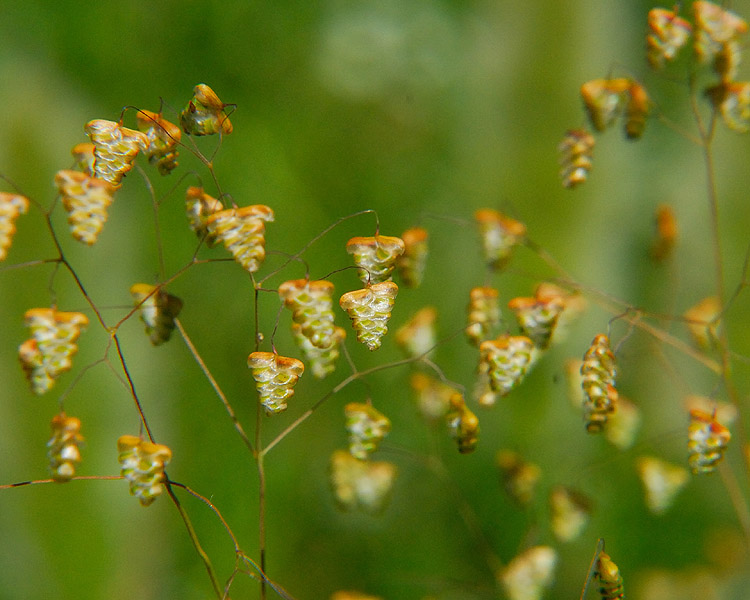
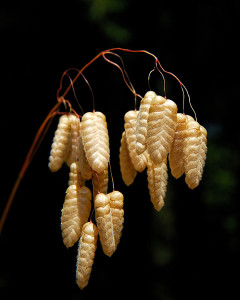
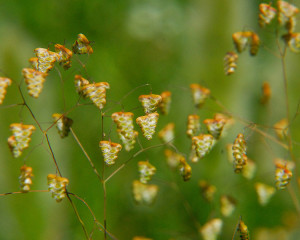

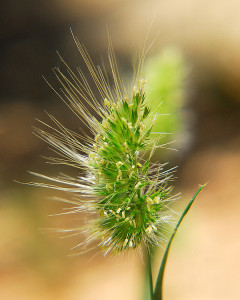
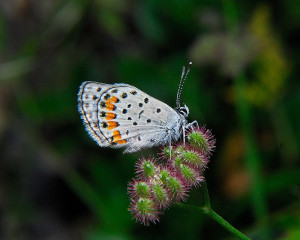
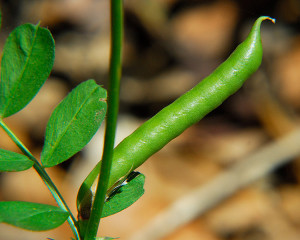
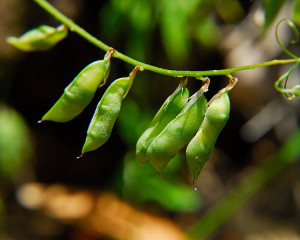







Dear Clare, I have read this second posting on Native Weeds with as much interest as the first. I am filled with admiration at the way in which you are approaching this whole difficult subject area and taking responsibility for something which so many others would ignore.
I shall look forward to hearing of progress made in the future.
Edith, we shall look forward to having progress to report! 😀
At least if the whole farm thing doesn’t work out, you can fall back on opium production.
LOL…might be safer if we resort to selling Daffodils 😛
Clare, I’m really impressed with the systematic way that you are going about identifying your natives and undesirable non-natives and then trying to replace the latter with the former. This will be a big job. Do you think you’ll approach it by focusing on one area of the property at a time or one species at a time? (I guess the latter would make more sense if something is growing in a number of different areas and the seeds are spread by wind or birds.) I would love to hear more about this project as it develops.
Jean, we have little micro-climates dotted around the property. Pockets where some of these aggressors seem to prefer to grow. I think it will be a combination of both approaches. In the smaller areas I think it’s reasonable to tackle a whole section and replant it. In the larger problem areas, we may need to focus on the most aggressive species first, as clearing the whole space at once may leave the ground vulnerable to recolonization by more undesirables. If we can remove the Brome for example, we may be able to encourage the Gilias or Poppies along, and then weed out the Briza grasses as we go, while the natives fill in, as Briza doesn’t grow in dense stands like the Brome. I expect there to be some trials…and at least a few errors, but hopefully with patience, and determination, we’ll get there.
Grasses must be tricky. One minute they are innocuous green leaves – next minute they are in flower and then…whoops they have seeded (very efficiently)!
your images of seedheads and grasses are so nice, they can compete with pictures of flowers.i love those papaver heads. i am very impressed by your knowledge of natives. I always learn something new from your posts. Thank you!
Funny — I’m trying to grow the “opium” poppy, because it’s also the “bread seed” poppy. Mine completely failed to germinate, or the slugs ate ’em, or something.
I’m dividing my garden into three sections, mentally.
California native plants that offer food or habitat for birds and bugs. Vegetables and herbs for the table, including that poppy. And plants that came with the house. All of the latter are “on probation.”
So many of these have such pretty seedheads. You really have so much good and interesting information in your posts. I love the Poppy seedheads and leave them up all summer. Buttercup is trying to take over part of our lawn. I’m really trying to get rid of it without chemicals, but it’s another thuggish one that just takes over here. I see lots of digging in my future, either getting rid of it or the lawn 🙂
Oh, the weedy annual grasses! We moved here nine years ago and for the first few years I worked diligently at reducing the Mediterranean annual grasses that have naturalized here. I’ve given up. I’m now just trying to keep them contained. The seed bank is deep and fire safety clearings in the general area produce more habitat for them every year. As long as we keep disturbing the chaparral in order to make room for people, the Mediterranean invasive grasses will be at home in this area. I hope that in your area they can have it a little harder and I wish your efforts at eradicate them will be successful.
We certainly brought some weed wrath on ourselves by clearing the dead stands of trees and scrub on the orchard slope last year. A number of the weeds, when I looked them up, favor ‘disturbed sites’…and that site was definitely disturbed last year. On the upside though, we also found a few native plants we didn’t know we had. At least here this 7.5 acres won’t be subdivided, so hopefully over time we can have a positive impact here.
Do you have any serpentine soils on your property? Non-natives don’t have the ability to grow on them, but natives do. They are the last hold outs of natural perennial grassland that we have left in California. Before the Spaniards came, California was green all year round.
A geologic analysis was done here from a bore sample before the house was built. I wish we had some serpentine soils here, alas it’s mostly mudstone. Weathers primarily to sand. We’re not far from the Santa Cruz Sand Hills, so I suppose this is sort of a transition zone. Makes for very well drained soil, and especially in the exposed, non-forested areas, the nutrient content of the soils is quite poor.
I’m only just catching up with your posts, Clare. This is a fascinating exercise … and such hard work. Here in my part of the world, native grasses are almost impossible to find … the introduced wonders from South America are everywhere and very invasive.
Clare, I am not familiar with many of the plants, but ornamental grasses we love because of the year round beauty and low maintenance… cut them back in March and enjoy from then on.
Briza maxima is one of our favourites and one we have enjoyed for many years… the quaking of the heads and the simplicity of the erect green blades are quite satisfying. Know that in our conditions, it is one that will gradually cover an area in the same vicinity.
We do enjoy the Papaver somniferum which naturalize and cover areas of our hillside, especially next to the “burn pile” where it is dry and sloping. Some are in my flower beds and we find them quite controllable by simply pulling them out once they have bloomed.
As for Vetch… one horrible weed! It even grows through Muhlenbeckia axillaris that nothing else can penetrate.
Great photos, as usual, Clare. I found my heart momentarily inclining in sympathy to some of these intruders (esp. Robert’s geranium)… before I reminded myself that there are no bad plants, per se, just plants that end up in the wrong place and think they’ve hit the genetic jackpot, with conditions just perfect for world domination. 😉 That Foxtail Barley sounds particularly nasty, and I’ll be crossing my fingers for you on the vetch removal, because I adore your beautiful chickens.
Just last night, F. was looking over my shoulder at a gardening catalog and suggesting that I not consider growing an oriental poppy I was looking at — and I had to explain to him that not all poppies make opium. I’ll have to show him your gorgeous picture as a demo. 🙂
I think harvesting the poppy seeds before they scatter could be a wonderful excuse to use some of the chicken’s eggs for a nice brioche…
It’s unfortunate that we usually only realize a plant doesn’t belong right after it’s set seed all over the garden! I’m certainly guilty of that one!
I was thinking of doing this post. I could do one on some other weeds that I bet we have in common being located within maybe 15 miles of each other or less. I bet you have common brome, bromus carinatus, and maybe also woodland brome, bromus laevipes. I should post about them and the melica torreyana and the needlegrasses I got mixed up. I would be surprised if you didn’t have some of those.
I hope you do write that post. I’d love to compare notes/species. Especially with the grasses, as I’m trying to get a better grip on the native ones we have here. So far, the only native grass I’m reasonably confident about is California Sweetgrass (Hierochloe occidentalis), but I’m sure there others lurking here too. Alas, yesterday, we found Johnsongrass (Sorghum halepense) in the orchard…I’m off to pull it now, before it unleashes its wrath! 😛